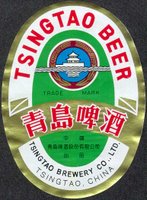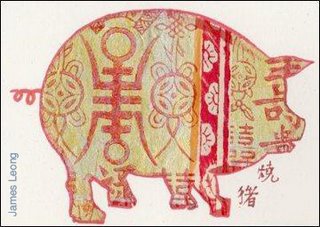 I've posted pictures here. The pictures are much easier to see if you run the slideshow; also you can read the captions (some of them are cut off on the summary page).
I've posted pictures here. The pictures are much easier to see if you run the slideshow; also you can read the captions (some of them are cut off on the summary page).Enjoy!
An American couple relocates.
 I've posted pictures here. The pictures are much easier to see if you run the slideshow; also you can read the captions (some of them are cut off on the summary page).
I've posted pictures here. The pictures are much easier to see if you run the slideshow; also you can read the captions (some of them are cut off on the summary page).

 There are a few artifacts from the tomb that are housed in traditional museum-style glass cases. But because the dig sites are so huge, and archaeological work is still incomplete, the Chinese government has built the exhibits on top of the pits. From the outside, they look like regular museum buildings – high-walled and high-windowed with fancy facades. On the inside, they look like warehouses built on top of exposed earth.
There are a few artifacts from the tomb that are housed in traditional museum-style glass cases. But because the dig sites are so huge, and archaeological work is still incomplete, the Chinese government has built the exhibits on top of the pits. From the outside, they look like regular museum buildings – high-walled and high-windowed with fancy facades. On the inside, they look like warehouses built on top of exposed earth. 7:30 this morning found us down at the end of Guanghua Lu for the Super Bowl party at Tim’s Texas Barbecue. The place has an interesting history: it only recently changed its name and its concept from John Bull’s pub, Beijing’s first non-hotel bar, which opened 16 years ago (if my sources are reliable). The rough framed walls are covered in Texas tokens: license plates, beer bottles, long horns, and sports gear from A&M, U. Texas, and the Dallas Cowboys. (Verdict on the bbq: not bad. The baked beans need some work.)
7:30 this morning found us down at the end of Guanghua Lu for the Super Bowl party at Tim’s Texas Barbecue. The place has an interesting history: it only recently changed its name and its concept from John Bull’s pub, Beijing’s first non-hotel bar, which opened 16 years ago (if my sources are reliable). The rough framed walls are covered in Texas tokens: license plates, beer bottles, long horns, and sports gear from A&M, U. Texas, and the Dallas Cowboys. (Verdict on the bbq: not bad. The baked beans need some work.) This morning my husband tells me that, some point in the middle of the night, he woke up to find me up on one elbow, leaning over him, eyes wide open. “What is it?” he said. I responded, he says, in a string of Chinese. When he said something like, “I can’t understand you,” I repeated the phrases. We went back and forth until finally he said, “Stop!” at which point, he reports, I rolled over and went back to ‘sleep’.
This morning my husband tells me that, some point in the middle of the night, he woke up to find me up on one elbow, leaning over him, eyes wide open. “What is it?” he said. I responded, he says, in a string of Chinese. When he said something like, “I can’t understand you,” I repeated the phrases. We went back and forth until finally he said, “Stop!” at which point, he reports, I rolled over and went back to ‘sleep’. The garish and sometimes inexplicable Christmas decorations (a string of lights on one high rise depicted a windmill over the words Merry Christmas) have been replaced by more authentic (and therefore more tasteful) decorations for Chinese New Year, which falls this year on February 18. 2007 will be the Year of the Pig and so of course there are pigs on sale everywhere: stuffed, gilded, painted and embroidered. The pigs are always fat and nearly round, their sweet faces flat against the stylized curve of their bodies, thereby obfuscating the slightly sinister look that real pigs have, with their long snouts, powerful oblong bodies and those mythic cloven hooves.
The garish and sometimes inexplicable Christmas decorations (a string of lights on one high rise depicted a windmill over the words Merry Christmas) have been replaced by more authentic (and therefore more tasteful) decorations for Chinese New Year, which falls this year on February 18. 2007 will be the Year of the Pig and so of course there are pigs on sale everywhere: stuffed, gilded, painted and embroidered. The pigs are always fat and nearly round, their sweet faces flat against the stylized curve of their bodies, thereby obfuscating the slightly sinister look that real pigs have, with their long snouts, powerful oblong bodies and those mythic cloven hooves.